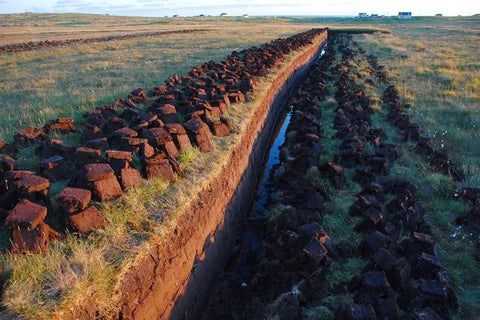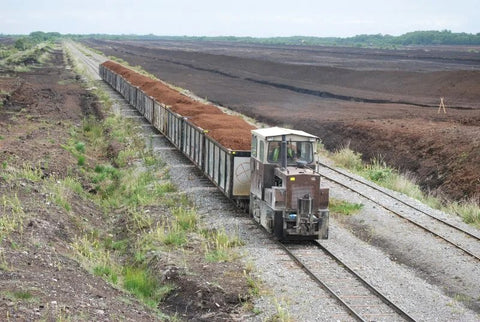Growing Microgreens can be healthy for us AND the Earth! (8 minute read)
You might be surprised to learn that growing Microgreens the wrong way can lead to a dramatic increase in your carbon footprint. Truly, it’s another example of why Climate Change is such a difficult problem to solve. The scope of the problem and obstacles to potential solutions are daunting, and the damage is difficult to see as it rolls out so slowly (at least up until recently). The most passionate pushbacks occur from long-standing industries, citing the potential for industry-wide job losses and big economic changes for people and regions. Boiled down, the debate manifests most often as commerce vs ecology. For some, commerce means NOW and ecology is a problem to be solved LATER. It’s easy for concerned citizens to become angry at these commerce-first people, seemingly fiddling while Rome is burning, but it’s not a new viewpoint and there’s lots of reason for it to exist. Humans have been so successful on this planet because our big brains allow us to iterate to improve our productivity. We just simply strive to do everything quicker and more efficiently than the people who came before us did.
The industry of growing Microgreens is young. The first Microgreens were commercially grown in the mid-1990’s, and by now most of us know that they represent a huge health benefit to all of us. The past few years alone have resulted in over a 300% growth in consumption. The market for Microgreens is getting very real, and produce industry experts believe that consumption of Microgreens worldwide will rise more than 1400% over the next 4 years, with demand outpacing production! So, despite all the growth we’ve had in this industry, we’re still in our infancy. These facts just underscore the need to get it right, BEFORE we create large volume, entrenched practices which begin to negate much of the good work being done to slow carbon emissions.
Are you still wondering how something as simple as growing Microgreens can impact greenhouse gas emissions? How about a hint then…

This is a peat bog. It’s a natural wetland area that took at least 10,000 years to produce. This particular bog has layers and layers of sphagnum moss that was covered up before it was able to compost, locking 50+ million tons of carbon into the Earth, where it should stay. In fact, peat bogs now only occupy 3% of the Earth’s land, but they contain 30% of all the carbon currently sequestered in the Earth – twice the amount of sequestered carbon than all of Earth’s forests combined.
This is the way peat most often comes into our lives as growers of Microgreens. The potting mixes used by Microgreens growers is made of 75%-85% peat.

To get that bag of peat, the peat bog is first drained by having deep channels scored into it. The water is then pumped out.

Then the dried bog is set afire to kill off the living vegetation rooting in the topsoil, over and over again as new growth happens, releasing a terrible amount of greenhouse gases, but that is just the beginning of the damage!

No longer locked in place by the wetland vegetation, the exposed bog will continue to leak 10,000+ year old carbon into the atmosphere for as long as it remains uncapped. The peat is sucked out of the bog by a mobile vacuum into rail carriers leading to the processing facility. This process continues until there’s nothing left but a deep hole.

Ireland became the first country to ban peat extraction and peat products to fight climate change. Legislation has since been introduced in several other countries, but it’s being fought hard by industry. Most peat available in the USA comes from Canada, where peat extraction is occurring at staggering levels. Our industry is creating a huge and growing demand on potting mix producers. In fact, the peat producers can’t keep up with this rising demand and are working aggressively in Canada, South America and in Africa to extract as much as possible. This will be devastating from an ecological and climate science point of view. It is believed that 86% of the peatlands in England have already been destroyed. If this level of destruction repeats in Canada, it will likely end most life on Earth.
Most Microgreens growers have no idea their operations could be substantially contributing to greenhouse gas levels. Because of the extremely high carbon density of peat, even a medium sized indoor farm (at 100 trays per week) growing on potting mix equates to the same carbon emissions as operating 42 average combustion engine passenger cars.
So what can be done about all of this? Firstly, take the pledge to go Peat Free at The Wildlife Trusts website. Second, switch to our reusable mesh medium, which is obviously a Peat-Free Solution. This helps in two ways – our system removes some of the climbing demand for peat in the Microgreens market and we donate 4% of our proceeds directly to 3 Groups working on the Problem…
The Wildlife Trusts
Friends Of The Earth
Project Drawdown
We also recommend these organizations for your consideration if you’re looking for a charity to support.
